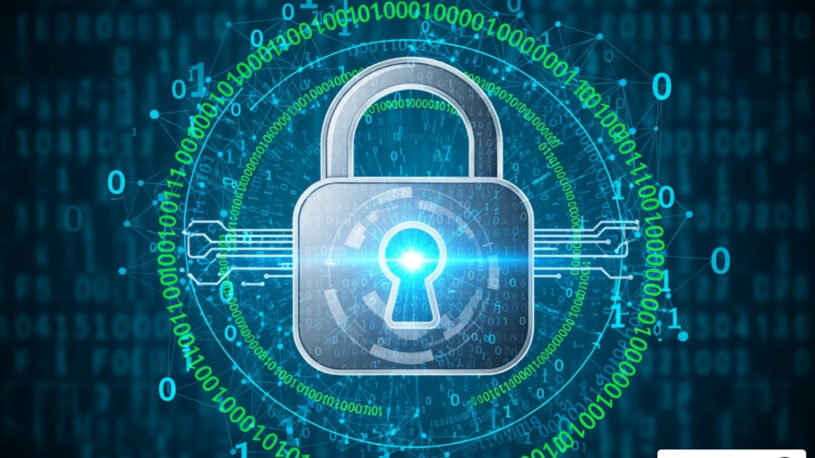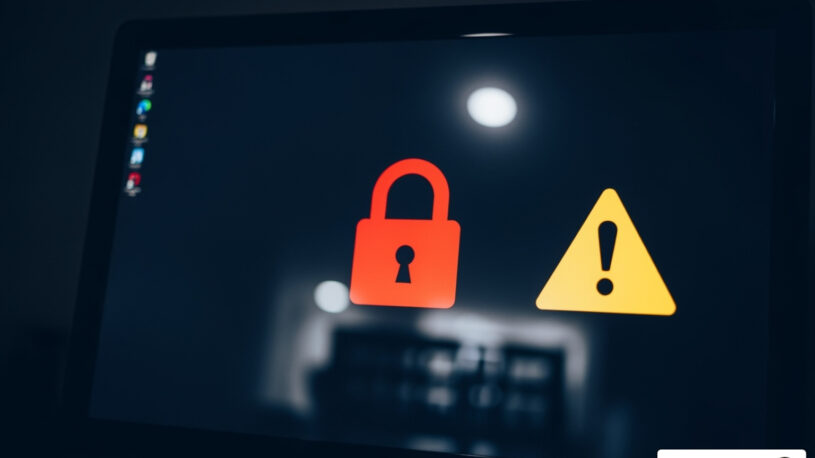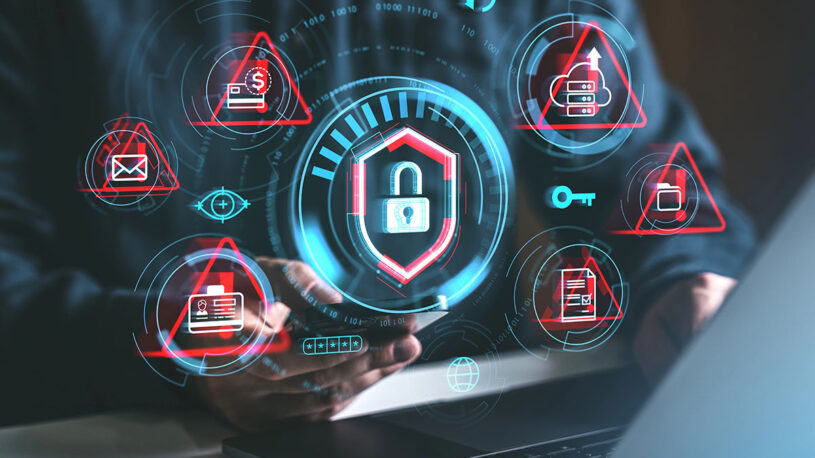

Cybersecurity for SMBs Made Simple: Solutions You Need Now
Protecting Your Business in the Digital Age
Cybersecurity solutions for SMBs are essential defensive measures that protect small and medium businesses from growing digital threats. Here’s what you need to know:
| Essential SMB Cybersecurity Solutions | Why You Need It |
|---|---|
| Next-Generation Antivirus/EDR | Stops malware and ransomware using AI and behavior analysis |
| Managed Firewall | Controls network traffic and blocks unauthorized access |
| Email Security Gateway | Filters phishing attempts and malicious attachments |
| Multi-Factor Authentication | Prevents account takeover even if passwords are compromised |
| Data Backup & Recovery | Ensures business continuity after cyber incidents |
| Security Awareness Training | Addresses the human element (often the weakest link) |
Small businesses are increasingly in cybercriminals’ crosshairs, with 43% experiencing at least one cyberattack in the last year. The financial stakes are enormous – the average cost of a data breach for companies with fewer than 500 employees is a staggering $2.98 million. Most concerning? 76% of attacks happen after hours or on weekends when your team is least prepared to respond.
Gone are the days when cybersecurity was just for large enterprises. Today’s small and medium businesses face sophisticated threats targeting their valuable data, customer information, and operational systems. The shift to remote work has only expanded these vulnerabilities, with 3 out of 5 small businesses believing they’re more vulnerable due to employees working from home.
Legacy antivirus isn’t enough anymore. Modern cybersecurity solutions for SMBs employ artificial intelligence, behavior monitoring, and cloud-based protection that can identify and stop threats before they cause damage – without requiring enterprise-level budgets or IT teams.
I’m Randy Bryan, founder of tekRESCUE. I’ve helped dozens of small and medium businesses implement effective cybersecurity solutions that balance protection, usability, and cost-effectiveness.

Why Small and Medium Businesses Can’t Ignore Cybersecurity
Remember when we thought cyber attackers only went after the big fish? Those days are long gone. Today’s reality is that cybercriminals actively target smaller businesses precisely because they often lack robust security while still holding valuable data worth stealing.
The numbers tell a sobering story: 73% of small and mid-sized businesses experienced a data breach or cyberattack in 2023. Behind this statistic are thousands of business owners who faced operational chaos, drained bank accounts, and damaged customer trust.

What makes these attacks particularly devious is their timing. Research confirms that 76% of attacks happen after hours or during weekends – precisely when your IT help isn’t readily available and response times lag. Attackers deliberately strike when your defenses are at their weakest.
The regulatory landscape is also shifting beneath our feet. Data protection regulations increasingly apply to businesses of all sizes, with penalties that can devastate a small company’s finances. Even if specific regulations don’t directly apply to you, your larger business partners might require security assessments before continuing their relationship with you.
Building a culture of security is your starting point. Everyone on your team needs to understand basic cybersecurity practices and recognize their role in keeping the business safe. As the FCC notes in their Cybersecurity Tip Sheet for Small Business, “every business that uses the Internet is responsible for creating a culture of security that improves consumer confidence.”
Want to better understand what you’re up against? Check out our Cybersecurity Crash Course: Understanding the Basics of Cyber Threats.
Top Cyber Threats Facing SMBs Today
The threat landscape for small businesses is constantly evolving, but certain attack types remain consistently dangerous. Understanding these threats helps you build appropriate defenses:
Ransomware has become the nightmare scenario for many businesses. These attacks encrypt your critical data and demand payment for the decryption key. Modern ransomware gangs also steal your data before encrypting it, threatening to publish sensitive information if you don’t pay up.
Phishing and Business Email Compromise (BEC) attacks exploit human psychology rather than technical vulnerabilities. These social engineering tactics trick employees into revealing credentials or transferring funds. BEC attacks are particularly cunning, often using emails that appear to come from executives requesting urgent wire transfers.
Credential theft remains a primary attack vector because it works so well. Once criminals have valid usernames and passwords, they can access your systems without triggering alerts since they’re using legitimate login information.
Supply chain attacks target the vulnerable links in your business relationships. When hackers compromise your IT provider, software vendor, or business partner, they gain a pathway directly to your systems.
IoT vulnerabilities create unexpected entry points into your network. Those “smart” devices – from security cameras to printers – often ship with weak security controls and rarely receive updates.
What’s most alarming? 99% of breaches are financially motivated. These aren’t random acts – they’re calculated criminal operations targeting your business assets.
SMB Vulnerabilities vs Large Enterprises
Small businesses face many of the same threats as large enterprises, but with several distinct disadvantages:

Limited resources create an uphill battle for most small businesses. Many operate with minimal IT budgets and lean staffing. You might have one IT person juggling everything from fixing printers to securing your network, or you might rely entirely on outsourced support with limited availability.
Legacy technology often lingers in small business environments. Older systems that no longer receive security updates create perfect targets for attackers exploiting known vulnerabilities that will never be patched.
Inadequate security tools leave gaps in your defenses. Many small businesses rely on consumer-grade security products that lack the sophisticated threat detection capabilities needed in today’s landscape. It’s like trying to protect your house with a screen door when you need reinforced steel.
Cloud misconfigurations have created a whole new category of risk. The rapid adoption of cloud services often outpaces security expertise, leaving sensitive data exposed through improper settings and configurations.
Security awareness gaps among employees create human vulnerabilities. Without regular training, your team members remain more susceptible to social engineering attacks. One innocent click on a malicious email can compromise your entire network.
Third-party relationships introduce risk beyond your direct control. Small businesses typically work with numerous vendors and partners without conducting thorough security assessments, potentially creating backdoors into their systems.
Foundational Cybersecurity Best Practices
Before investing in specific solutions, implement these fundamental practices that form the bedrock of any solid security program:
Strong passwords and multi-factor authentication (MFA) should be non-negotiable. Enforce complex passwords that change regularly, and implement MFA wherever possible. This simple step prevents up to 99% of account compromise attempts.
Regular, tested backups provide your last line of defense. Follow the 3-2-1 rule: maintain three copies of important data on two different media types with one copy stored offsite. And regularly test restores – an untested backup might as well not exist.
Consistent patch management closes known vulnerabilities. Establish a routine schedule for updating all software, operating systems, and firmware. Unpatched systems are like leaving your windows open during a break-in spree.
Proper network security creates defensive layers. Configure firewalls correctly, segment your network to limit an attacker’s movement, and use VPNs for secure remote access.
Thoughtful access control limits potential damage. Implement the principle of least privilege—give employees access only to what they need to do their jobs. And when employees leave, immediately revoke their access to all systems.
Regular security awareness training transforms employees from vulnerabilities into defenders. They need to recognize phishing attempts, practice safe browsing, and know how to report suspicious activities.
Incident response planning prepares you for the worst. Develop and practice your response plan before you need it. Know exactly who to call, what steps to take, and how to minimize damage when an incident occurs.
These fundamentals create a solid foundation that more advanced security solutions can build upon. For more detailed guidance, visit our comprehensive resource on cybersecurity best practices for small businesses.
Cybersecurity Solutions for SMBs: From Basics to Advanced Protection
Now that we’ve covered the fundamentals, let’s explore the specific security solutions that can truly protect your business. Think of cybersecurity like layers of an onion – you need multiple protective layers working together, not just a single solution hoping to catch everything.
The NIST Small Business Cybersecurity Corner recommends something practical – a risk-based approach. This means focusing your limited resources on protecting what matters most to your business. You don’t need to implement every security gadget on the market, just the right mix for your specific situation.
Essential Cybersecurity Solutions for SMBs: Core Toolset
Every small business should consider these fundamental security solutions as the backbone of their protection strategy:

Next-Generation Firewalls (NGFW) do much more than traditional firewalls. While old-school firewalls just filtered traffic based on basic rules, NGFWs actually inspect what’s inside that traffic, control which applications can communicate, and actively prevent intrusions. For most SMBs, a managed NGFW service makes the most sense – you get enterprise-grade protection without needing to become a security expert yourself.
Next-Generation Antivirus (NGAV) & Endpoint Detection and Response (EDR) represent a huge leap forward from traditional antivirus. Instead of just looking for known malware signatures (like trying to catch criminals only if you have their photograph), these modern solutions analyze behavior patterns and use machine learning to spot suspicious activities. They’re like having a security guard who notices when someone is acting suspiciously, even if they’ve never seen them before.
Email Security Gateways are absolutely essential since email remains the number one way attackers target businesses. A good email security solution filters out spam, catches phishing attempts, scans attachments for hidden threats, and helps prevent those sneaky business email compromise attacks where someone pretends to be your CEO asking for an urgent wire transfer.
Secure VPN & Remote Access Solutions have become non-negotiable with today’s distributed workforce. VPNs encrypt the connection between remote devices and your network, while more advanced solutions can actually check if a device is secure before letting it connect to your systems.
Password Management & Multi-Factor Authentication work together to solve one of the biggest security headaches – password problems. Enterprise password managers help employees create and remember strong, unique passwords for everything, while MFA adds that crucial second verification step that stops attackers even if they somehow get the password.
Backup & Disaster Recovery (BDR) solutions are your safety net when other protections fail. Modern BDR solutions automatically back up your data, offer quick recovery options, and even include protections to prevent ransomware from encrypting the backups themselves.
DNS Filtering is often overlooked but incredibly effective. It blocks connections to known malicious websites and command servers, stopping malware infections before they even start. Think of it as a bouncer that prevents your employees from accidentally walking into dangerous digital neighborhoods.
Vulnerability Management, Mobile Device Management, and Security Information and Event Management (SIEM) round out a comprehensive security approach as your business grows more sophisticated in its security posture.
For a detailed guide on implementing these tools effectively, check out Cybersecurity Best Practices for SMBs.
Next-Generation vs Legacy Antivirus: What SMBs Need to Know
The difference between traditional antivirus and next-generation solutions is like comparing a home security system from the 1990s to one from today:
| Feature | Legacy Antivirus | Next-Generation Antivirus |
|---|---|---|
| Detection Method | Signature-based (known threats) | Behavior analysis + Machine learning |
| Zero-Day Protection | Limited to none | Strong protection against unknown threats |
| Ransomware Defense | Minimal | Advanced prevention capabilities |
| Performance Impact | Often high | Typically lower |
| Cloud Management | Limited | Comprehensive cloud console |
| Remediation | Manual | Automated response and rollback |
| Threat Intelligence | Delayed updates | Real-time cloud-based updates |
| Offline Protection | Signature-based only | Behavioral analysis continues working |
Legacy antivirus is like a security guard who can only recognize criminals if they’ve seen their photo in a database. Next-generation solutions are more like behavioral profilers who can spot suspicious activities even from people they’ve never seen before.
The most advanced EDR solutions don’t just detect problems – they actively respond by isolating infected computers, removing malicious files, and even rolling back changes made by malware. This automation is particularly valuable when you don’t have a large IT team standing by 24/7.
Securing Remote Work & Cloud Services
The shift to remote and hybrid work has created new security challenges that require specific solutions:

Zero Trust Access Control represents a fundamental shift in security thinking. Traditional security was like a castle with a moat – once someone got past the drawbridge, they could go anywhere. Zero Trust instead assumes no one should be automatically trusted, requiring continuous verification regardless of location. This includes verifying user identity with strong authentication, checking device health before granting access, providing just enough access to do the job, and continuously monitoring for suspicious behavior.
Endpoint Hardening ensures remote devices have robust security controls. This means keeping systems updated, enabling disk encryption to protect data if laptops are lost or stolen, controlling which applications can be installed, and using endpoint protection that can be managed remotely.
Secure Home Networks matter more than ever. Provide guidance for employees on securing their home Wi-Fi by changing default router passwords, enabling strong encryption, creating separate networks for personal devices, and keeping router firmware updated. For key employees, consider providing business-grade routers.
SaaS Security & Configuration requires specific attention since most businesses now rely heavily on cloud services. Conduct regular security reviews of your cloud platforms, enable comprehensive logging, implement tools that provide visibility into cloud activities, and regularly review who has access to what.
Mobile Device Management helps secure both company-owned and personal devices used for work by enforcing screen locks and encryption, enabling remote wipe capabilities if devices are lost, controlling which apps can access company data, and keeping work data separate from personal information.
Cloud Backup Solutions ensure remote work doesn’t create data protection gaps by automatically backing up remote computers, including Microsoft 365 or Google Workspace data, with regular testing to ensure recoveries actually work.
For more detailed guidance on securing your remote workforce, visit our resource on Securing Remote Workers.
Managed Detection & Response & Other Outsourced Services
For most small businesses, building an in-house security team simply isn’t realistic. Managed security services provide enterprise-grade protection without requiring you to become a security expert or hire a team of specialists:
Managed Detection and Response (MDR) combines advanced security tools with human expertise to provide round-the-clock protection. Unlike traditional services that might just alert you to problems and expect you to handle them, MDR providers actively hunt for threats and respond to incidents on your behalf. This includes 24/7 monitoring by a Security Operations Center, proactive threat hunting by security analysts, rapid incident response when issues are detected, and regular reporting to keep you informed.
Virtual CISO (vCISO) Services provide access to experienced security leaders without the cost of a full-time executive. These professionals can develop your security strategy, create necessary policies and procedures, help with regulatory compliance, and guide your security investments based on your specific risks.
Compliance Monitoring and Management helps businesses in regulated industries steer complex requirements through regular assessments, preparation for audits, identification of gaps in your compliance, and development of necessary policies.
Cyber Insurance Support is increasingly important as insurers become more selective about who they’ll cover. Working with managed security providers often helps reduce premiums and ensures you meet policy requirements. Some providers even offer integrated insurance options with their security services.
For guidance on responding to security incidents, review our resources on Incident Response and Data Breach Response Checklist.
Budgeting & Choosing the Right Cybersecurity Provider
Figuring out how much to spend on cybersecurity often feels like guesswork for small business owners. While there’s no perfect formula, industry benchmarks can help:

When evaluating potential security providers, look for comprehensive protection that offers integrated solutions rather than disconnected point products. Scalability is crucial – choose solutions that can grow with your business without requiring complete replacement as you expand. Ease of management through user-friendly interfaces reduces the burden on your team, while responsive support ensures help is available when you need it.
Providers with industry experience in your specific field will better understand your unique challenges. Transparent pricing without hidden costs helps with budgeting, and checking references and reviews from similar-sized companies provides real-world validation.
During vendor conversations, ask about response times for security incidents, proactive measures they take to prevent breaches, how they stay current with evolving threats, what training they provide for your employees, and how they measure and report on security effectiveness.
Cybersecurity is an investment in business continuity and reputation protection. As we often tell our clients, “You can pay a little now for prevention or a lot later for recovery.”
For more insights on security investments, read Who Truly Benefits from Cybersecurity?
Incident Response & Recovery Steps for SMBs
Despite our best efforts, security incidents can still happen. Having a well-defined incident response plan is crucial for minimizing damage and recovery time:
Preparation happens before an incident occurs. Document your critical systems and data, define who’s responsible for what during an incident, establish how you’ll communicate during a crisis, create and test backup procedures, and maintain emergency contact information for key vendors and partners.
Detection and Analysis involves identifying what’s happening and how serious it is. Determine which systems are affected, preserve evidence for later investigation, assess the impact on your operations, and classify how severe the incident is.
Containment prevents the incident from spreading further. Isolate affected systems from your network, change credentials for any compromised accounts, block malicious IP addresses or domains, and implement additional monitoring to catch similar attacks.
Eradication removes the threat from your environment. Clean or rebuild affected systems, patch the vulnerabilities that were exploited, remove malicious code and unauthorized access points, and verify that all traces of the attack are eliminated.
Recovery restores normal operations. Return systems to production in a phased approach, monitor closely for any lingering threats, implement additional security controls based on what you’ve learned, and restore data from clean backups.
Lessons Learned improves your security for the future. Conduct a thorough review after the incident, document what worked well and what didn’t, update your procedures based on these lessons, and implement additional controls to prevent similar incidents.
Tabletop exercises – where you simulate incident scenarios with your team – are an excellent way to test your response plan without disrupting operations. These exercises help identify gaps in your procedures and ensure everyone understands their responsibilities during an actual incident.
For more detailed guidance on preparing specifically for ransomware attacks, see our guide on Preparing Against Ransomware.
Conclusion & Action Plan
Cybersecurity for SMBs doesn’t have to be overwhelming or break the bank. With a thoughtful, strategic approach, you can significantly strengthen your security posture while maintaining a reasonable budget that works for your business.

Here’s a practical roadmap to get you started on your security journey:
Begin with a thorough risk assessment. Take stock of what you’re protecting—customer data, intellectual property, financial information—and identify where your vulnerabilities lie. This crucial first step helps you focus your resources where they’ll have the greatest impact rather than trying to do everything at once.
Next, build your layered security strategy. Think of your defenses like the layers of an onion, with complementary solutions protecting different aspects of your business. Your email gateway blocks phishing attempts, your endpoint protection catches malware, your firewall monitors network traffic, and your backup system stands ready if all else fails. These layers work together to create a security ecosystem stronger than any single solution.
Technology alone isn’t enough. Your team members can be either your greatest vulnerability or your strongest defense line. Regular security awareness training transforms employees from potential security risks into active participants in your security program. When staff understand why certain practices matter and how to spot suspicious activity, they become your human firewall.
Don’t just assume your security measures are working—test them regularly. Schedule vulnerability assessments, run simulated phishing campaigns, and conduct tabletop exercises to identify gaps before attackers do. These tests provide valuable feedback on where you need to strengthen your defenses.
Even with the best preventative measures, incidents can still occur. Having a well-documented incident response plan is like having insurance—you hope you’ll never need it, but you’ll be incredibly grateful it exists if you do. Make sure everyone knows their role during a security event and practice your response procedures regularly.
Finally, view security as an ongoing journey rather than a destination. Continuously improve your security program as your business evolves and new threats emerge. Schedule regular reviews of your security posture and stay informed about changing risks in your industry.

At tekRESCUE, we understand the unique challenges facing small and medium businesses in today’s threat landscape. Our team works alongside businesses throughout Central Texas—San Marcos, Kyle, Dallas, San Antonio and beyond—to develop cybersecurity solutions for SMBs that balance robust protection with practical usability and cost-effectiveness.
We believe effective security isn’t about having every possible tool—it’s about having the right mix of technologies, processes, and people working together to protect what matters most to your business. Our approach focuses on practical, business-oriented security that enables your growth rather than hindering it.
The digital threat landscape will continue to evolve, but with the right partner and approach, your business can stay protected while focusing on what you do best—serving your customers and growing your business.
For more information about our comprehensive Managed IT & Security Services, visit our services page or reach out to schedule a cybersecurity risk assessment. We’re here to help you steer the complex world of cybersecurity with confidence and peace of mind.
Table of Contents









